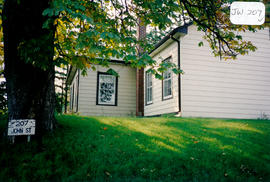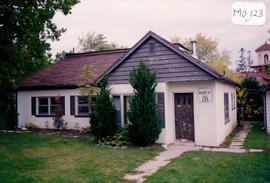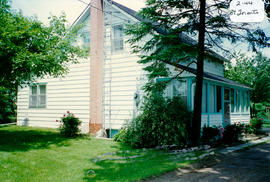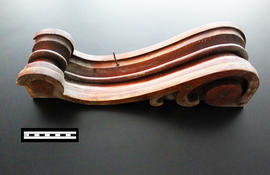- CA BWGPL GJ-HB-2017-04-06-10
- Item
- 1995
Parte de George Jackson fonds
This house is located at 187 John St. West (on the northwest corner of John and Toronto Streets). The 1½-storey, frame building was originally clad in stucco and it had a kitchen and rooms upstairs at the rear. There was also a garden and lawn at the back of the house. George Mapes and daughter Ella (wife of Jack Gapp), Curly Madian (?) and their daughters (Vivian and Margaret) lived here at one time. George was a retired farmer, dealer, and buyer. Years later, carpenter Joe LeBlanc and his family bought the house. He remodeled it and built a porch on the east side of the kitchen. Originally, there was a long barn (with a frame loft above) at the rear of the property. Joe’s daughter eventually had a nursing home built where the barn had stood. (1, 2)
Sem título










